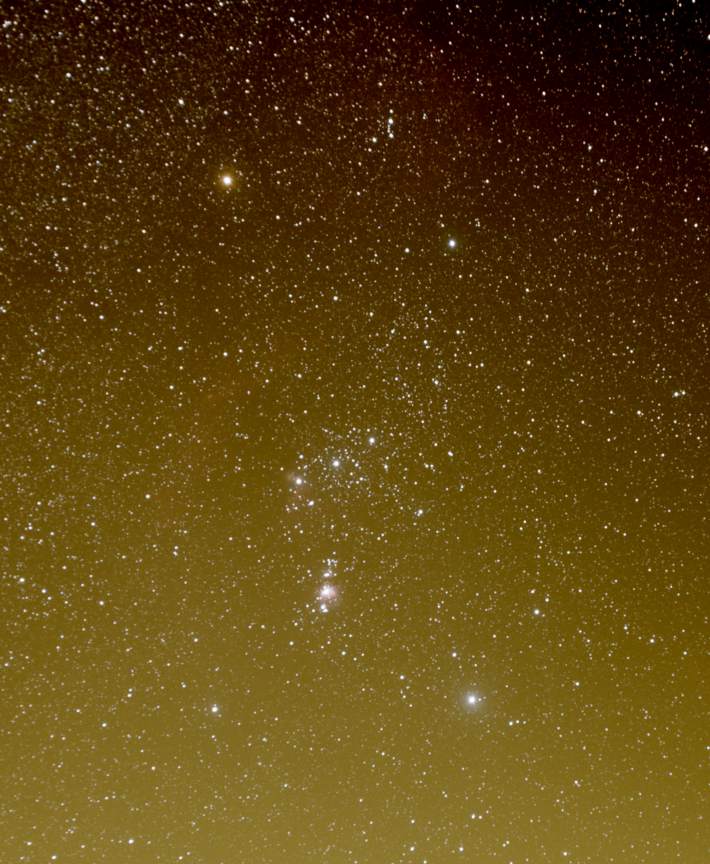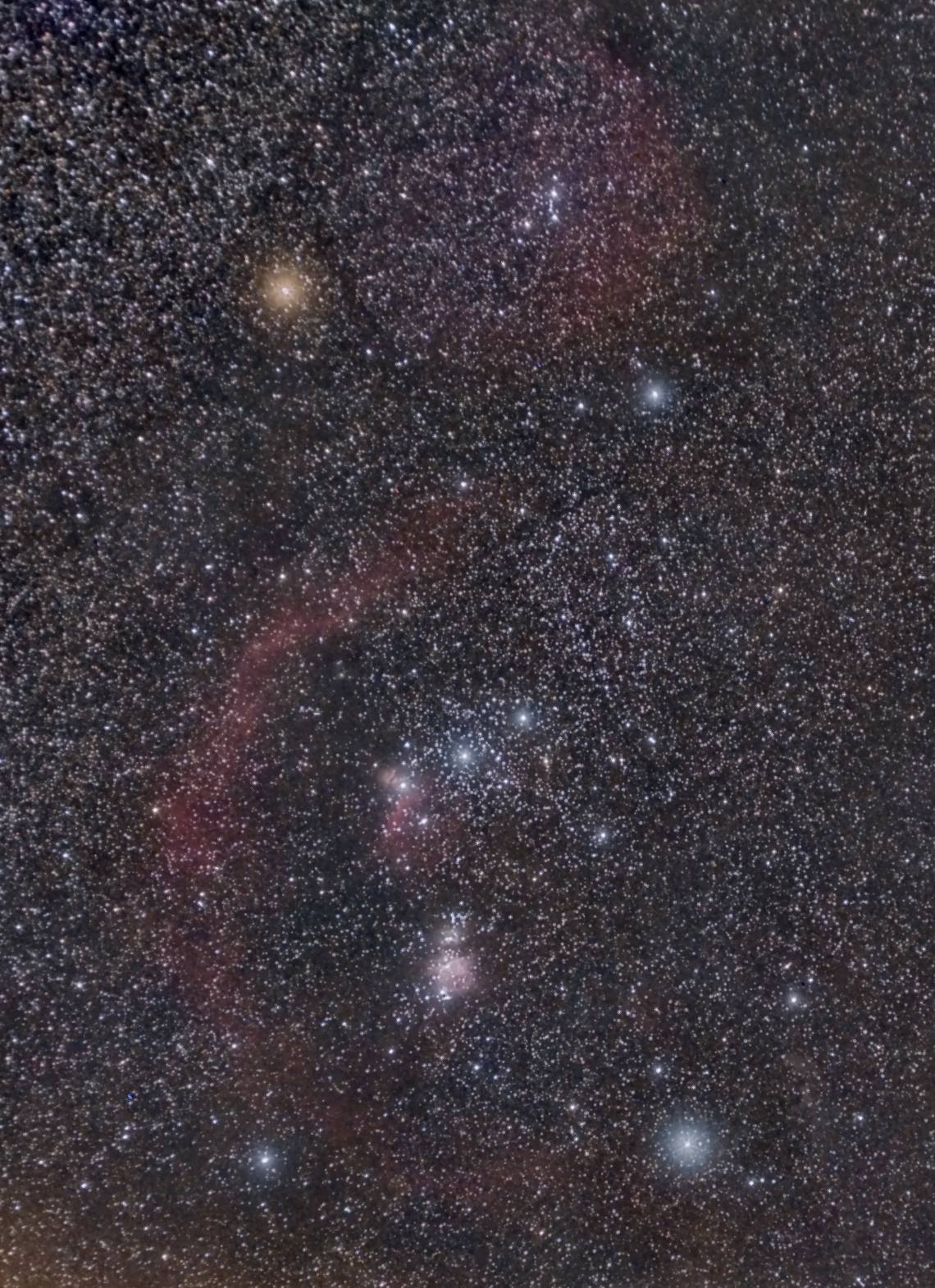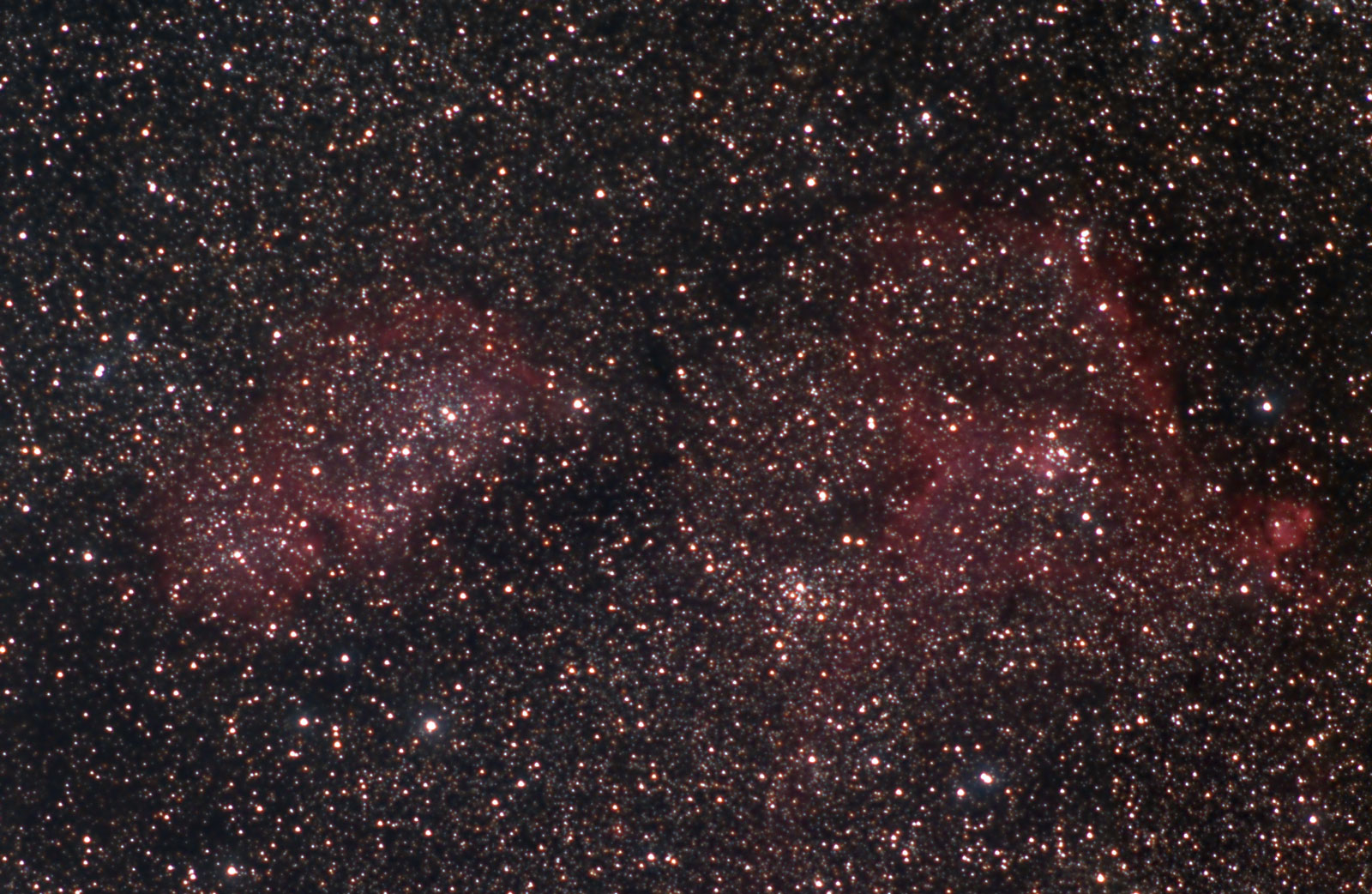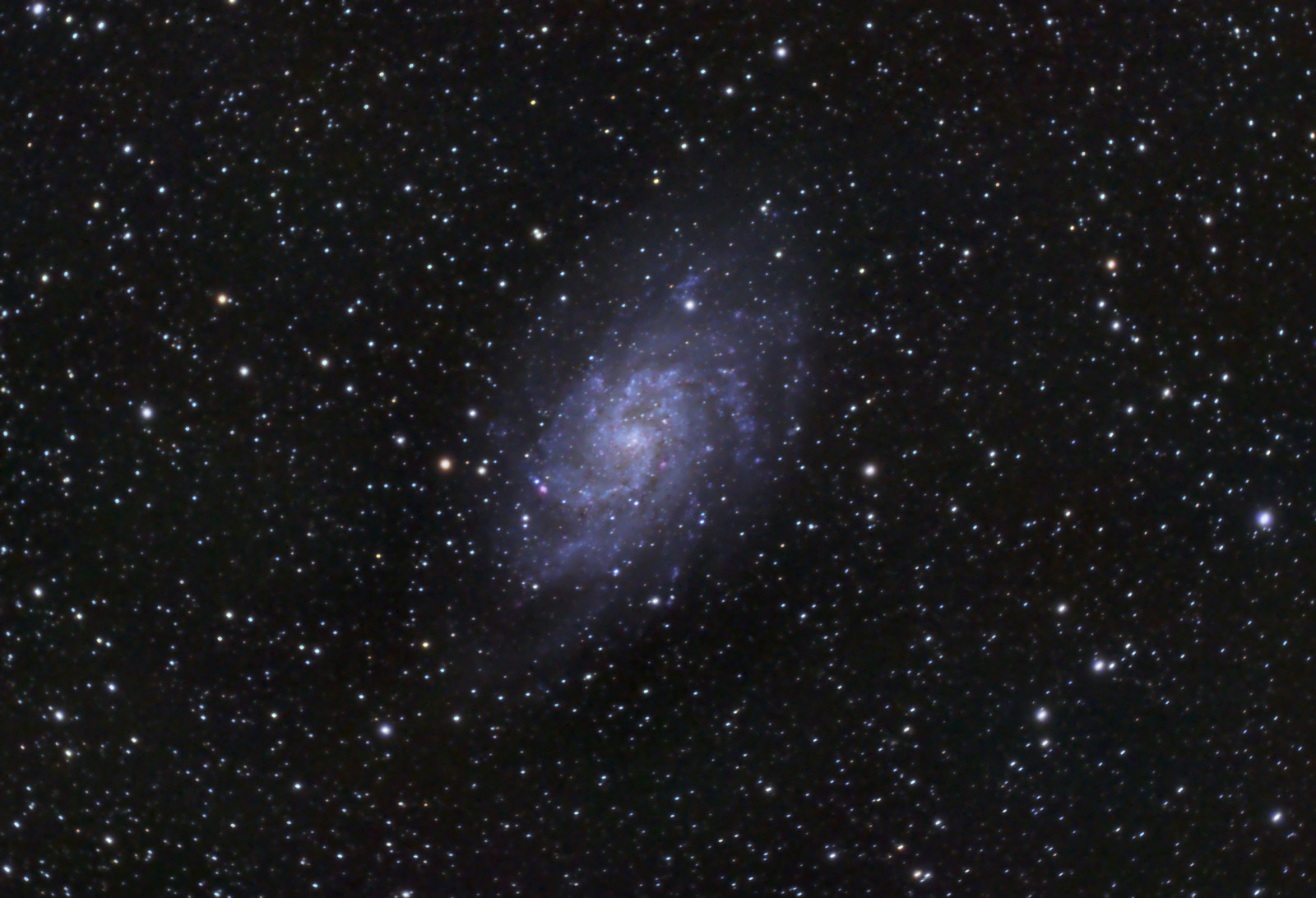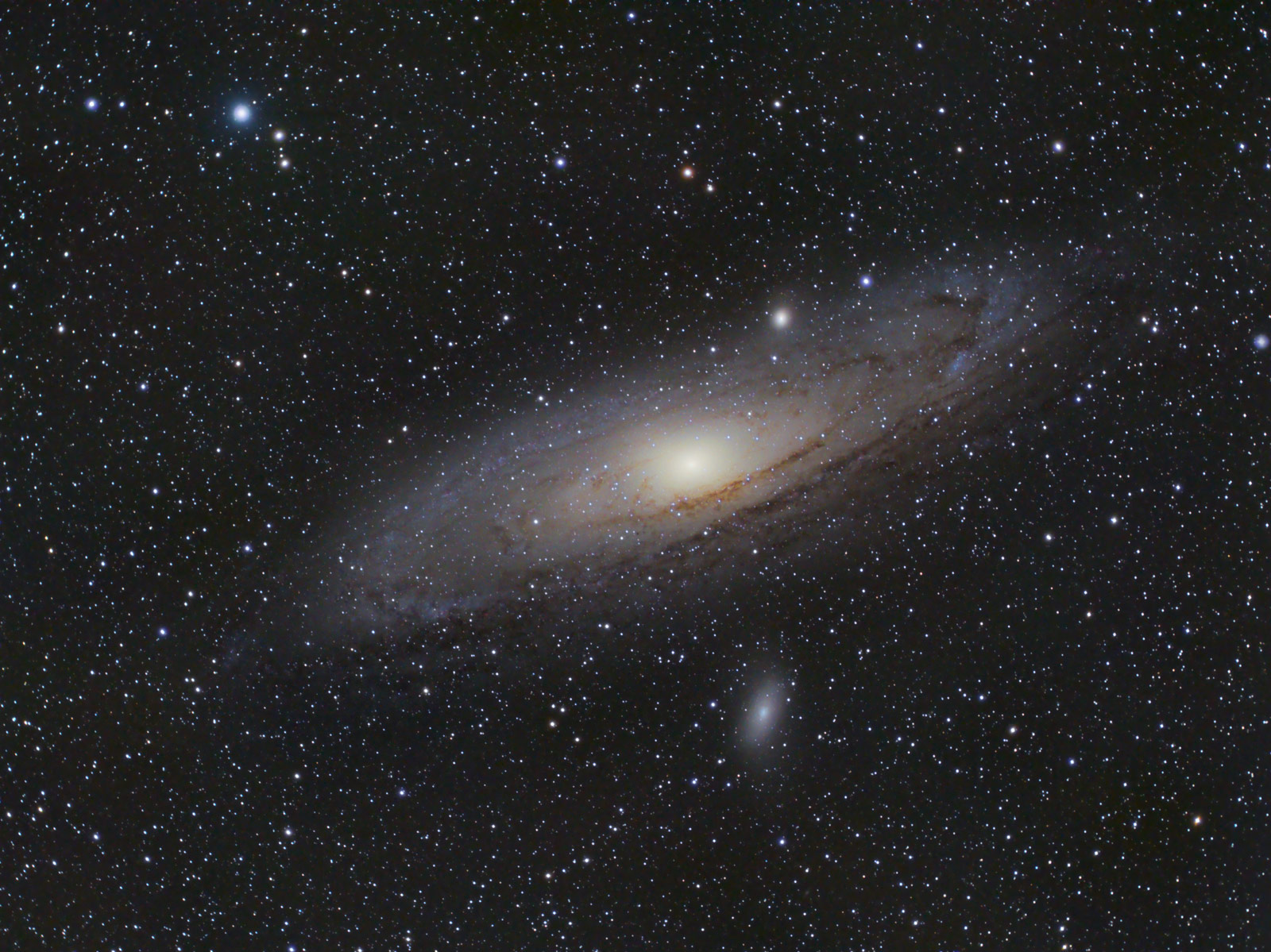Capturing meteor showers on camera is always a bit of a hit or miss affair. One of the main reasons I bought the Sigma 10-20mm zoom lens was for this type of photography as, set to 10mm it covers a large area of sky and it’s suitably fast at f/3.5 across its zoom range.
Wednesday night I spent 3 hours taking 30 second exposures along with several longer exposures to stack for the background. I packed up at 2am having taken 230 pictures with the air temperature at -5C; in a word, freezing.
While I saw quite a few meteors they were far from the radiant point in Geminii and inspecting the frames initially I only identified one meteor.
 If you’re having trouble spotting it, it’s top left in the frame. Click on the image for a larger version.
If you’re having trouble spotting it, it’s top left in the frame. Click on the image for a larger version.
A closer inspection of the pictures revealed one more diving into the Watton light pollution (bottom left).
 In the first image I’ve cut the meteor and superimposed it onto the background picture. The second is a single 30 second frame. A plate solved version is here although interestingly it hasn’t identified the open cluster M35, just above centre right.
In the first image I’ve cut the meteor and superimposed it onto the background picture. The second is a single 30 second frame. A plate solved version is here although interestingly it hasn’t identified the open cluster M35, just above centre right.
